Spotlight on Brendan Hoffman
Nov 25, 2012
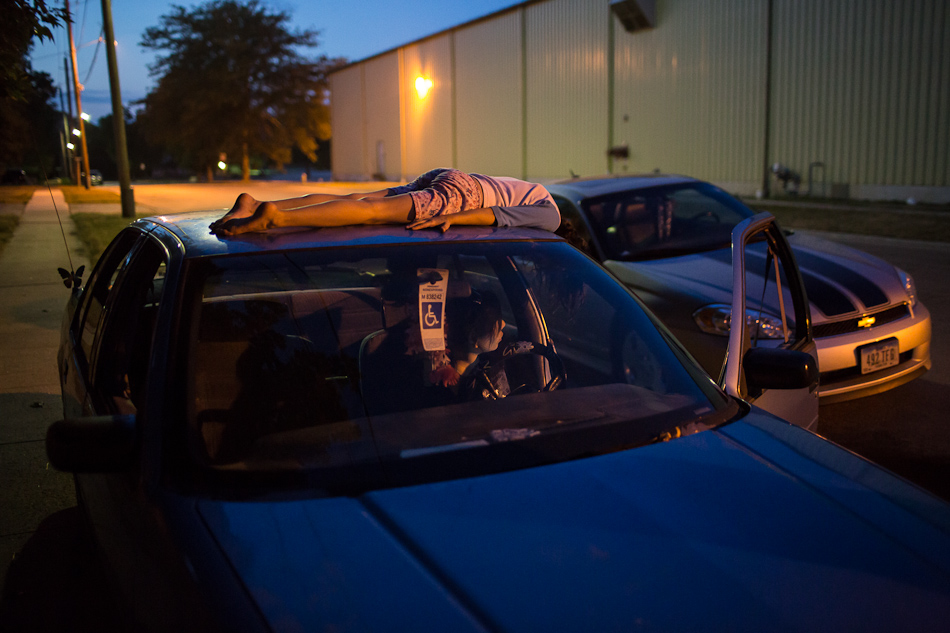
TID:
Please tell us about the image's context, background, the assignment, etc.
BRENDAN:
Since the middle of 2011, I've been working on an ongoing project about Webster City, Iowa. It's a town of about 8,000 people, and in March 2011 the town's main employer, a factory for a company called Electrolux that made washing machines, shut down and moved to Juarez, Mexico. The decline of manufacturing in the United States is a story that has been explored before, but I was intrigued in this particular case because I saw an opportunity to tell the story in a more complete way. Dominic Bracco II, my colleague in Prime (the collective we co-founded in 2011) has worked extensively in Juarez and I wanted to look at what happened to the people of Webster City as well as how a new factory in Juarez would impact people there. Did it create the same middle class jobs that were eliminated in Iowa? I haven't shot that part of the project yet, so I don't know the answer, but I have my suspicions.
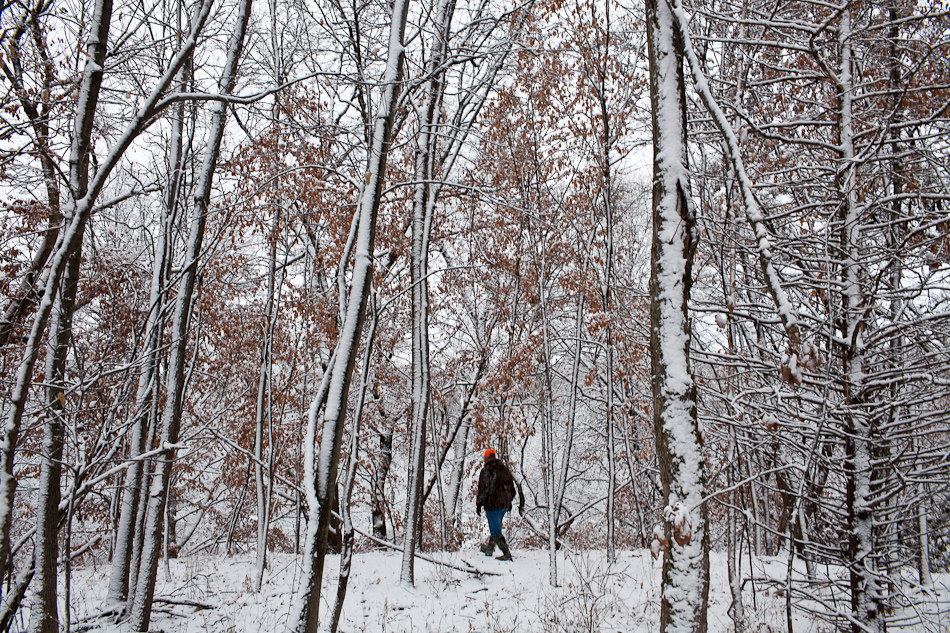
BRENDAN:
The other reason I'm interested in this story is because 2014 will mark the 20th anniversary of NAFTA. I'm curious to see what some of the effects of that treaty have been, as the notion of free trade has exploded over the past two decades. So far, Webster City hasn't fallen that far. However, I do get the sense that people are having to work harder, maybe two or three part-time, seasonal, or informal jobs, and not taking home quite as much as they used to.
It's a struggle for people to stay middle class, a struggle to understand what middle class really means, and on the Mexican side maybe a struggle - even with a steady factory job - to achieve a middle class life. As so many developing countries around the world see the emergence of their own version of the middle class, maybe there's a cautionary tale here. Lessons can and probably should be learned from what has happened in the past few years in the U.S. and Europe.
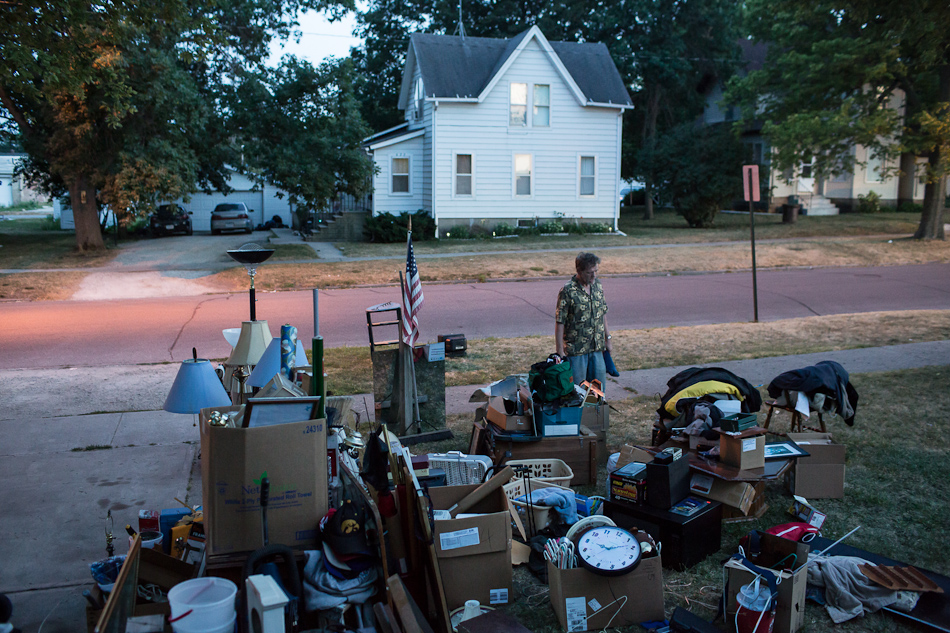
TID:
Can you describe what was going on in your mind as the image took shape, and what you were thinking when you made the image?
BRENDAN:
I was just out for an evening walk around the neighborhood where I was staying, looking for anyone outside enjoying a late day respite from the dreadful July heat. I came around the corner, saw the girl on top of the car, and immediately knew there was a picture there. Of course, by the time I got there, she was off the car, but I figured she would probably climb back up, which she did. Her body language just felt so right for the story, communicating a sense of exhaustion, frustration, and boredom. I was hoping to catch that without having as much freedom to work the scene as I would have had I already established some rapport.
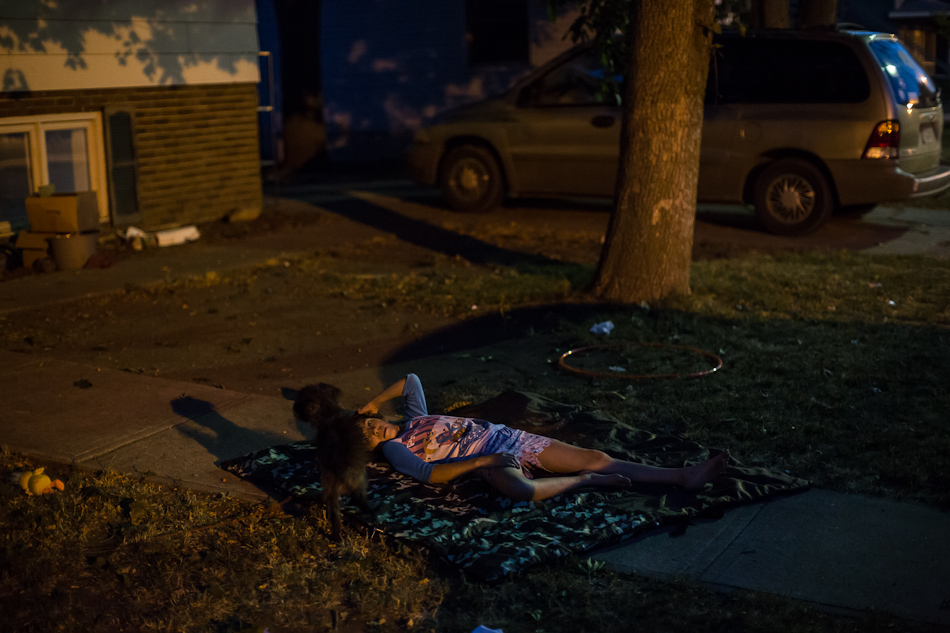
TID:
Are most of the images from the series these kind of "walk-up" scenarios? You mention there not being a rapport with this girl. What kind of rapport do you try to have with subjects and how do you craft it?
BRENDAN:
It's a mixed approach. I think in general, it is of course important to be a journalist, establish a relationship and trust, and try to get deep with people. However, there's something to be learned from observing the surface of things too. How people choose to present themselves is sometimes as interesting as who they really are. I don't shy away from either approach. The best rapport that I have with a subject in this project is with Steve, who is the one you see lying down with two of his kids.
On my last trip, I actually stayed at his house, slept on his couch for two weeks. That allows a way of working I've never experienced before, more or less eliminating the line between shooting and just being. I think that's ideal. I'm learning that if you're open and genuine, a lot of people will let you in for a little while, either out of curiosity or because they think your project is worthy. However, they have to really like you as a person and like spending time with you in order to get the level of intimacy that makes for compelling photography. You can't fake your way to that point.
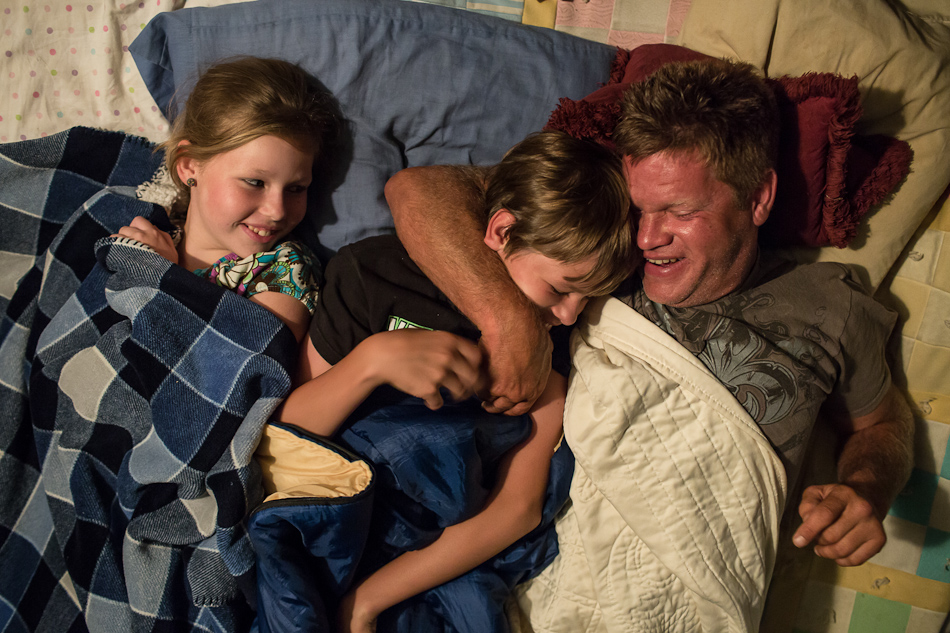
TID:
What were some problems or challenges you encountered while covering this, and how did you handle them?
BRENDAN:
The primary challenge was that I had never met these people before, the light was fading, and I had to figure out how to break the ice quickly without ruining the picture I saw from a distance. I walked by and sort of blurted out something about the car races that night, which are audible throughout the whole town, and as quickly as I could brought up that I'm from out of town, doing a picture story, etc.
It's always hard for me to hold up my end of a conversation while trying to see pictures out of the corner of my eye, but that 's what I was doing, and sort of grabbing quick shots at the same time to establish the fact that that's just how I roll, keeping it as natural as possible. On one level I got lucky; out of the nine frames I made, I think two of them work. On the other hand, I think both of those could be better. I certainly wish I had shot more, but at the same time, I think there was a limit to how many frames I could make without being a creeper.
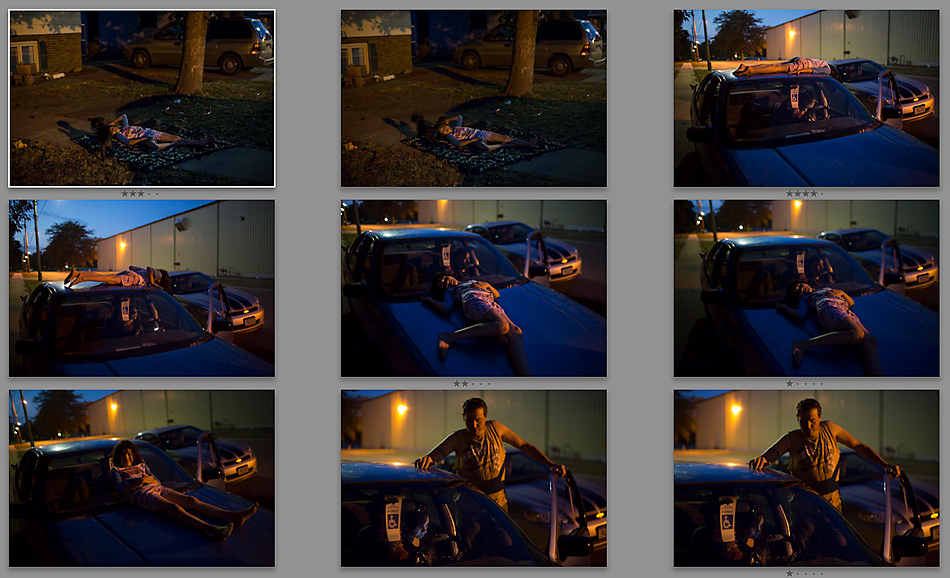
TID:
You said: "keeping it as natural as possible." Can you explain what you mean by that and how you try to accomplish it?
BRENDAN:
There's a weird dichotomy in the way cameras are perceived in American society. Many people are weirded out by cameras. They're paranoid, and they don't like having their picture taken. At the same time, everyone is snapping shots with their cellphones all the time, so there's also a level of fun associated with cameras. I think once people get a whiff of something that just doesn't sit right in the way you're wielding your camera, it's very difficult to move them to a place where they are comfortable with you.
I think what I mean by "keeping it as natural as possible" is that I try to make shooting a part of who I am, not something I do. That way, as long as I manage to come across as genuine and respectful, so will my photographic intentions. Every scenario is different, but in the case of the photo we're discussing, for example, I never asked if it was OK to take pictures. That would have almost sent the message that I had doubts about whether they'd say yes, and that they'd be justified in saying no. Instead I just shot, as if it was the most unremarkable thing in the world.
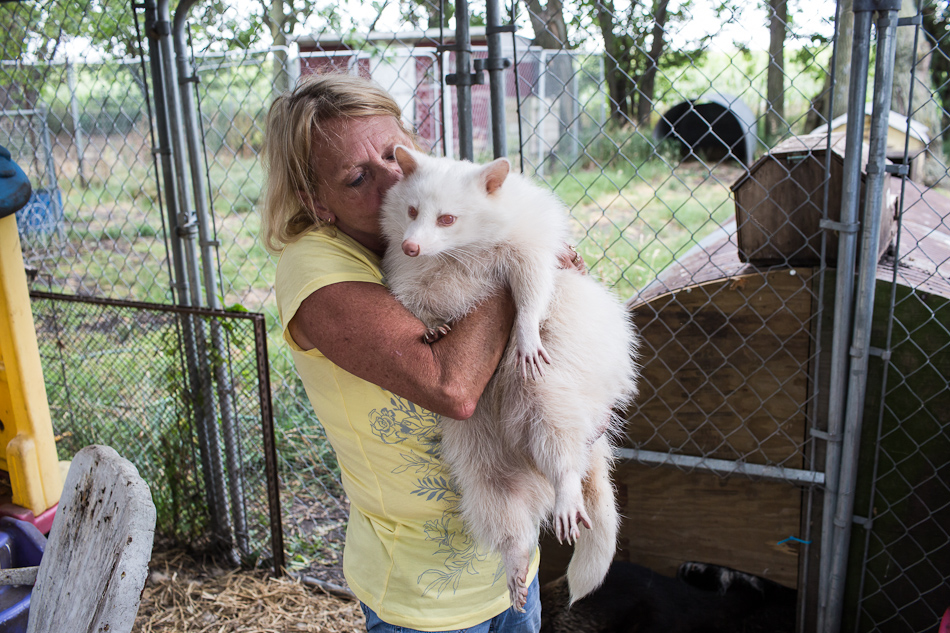
TID:
Can you talk a little bit more about how you approach people in general with this project? Do you have a routine you use to break the ice? In the other images you have, you are also in fairly unusual places: one looks like a older woman 's backyard, another standing over a man in water. Do you have a way that you usually approach people to explain who you are, what you are doing, and what you are looking for around them?
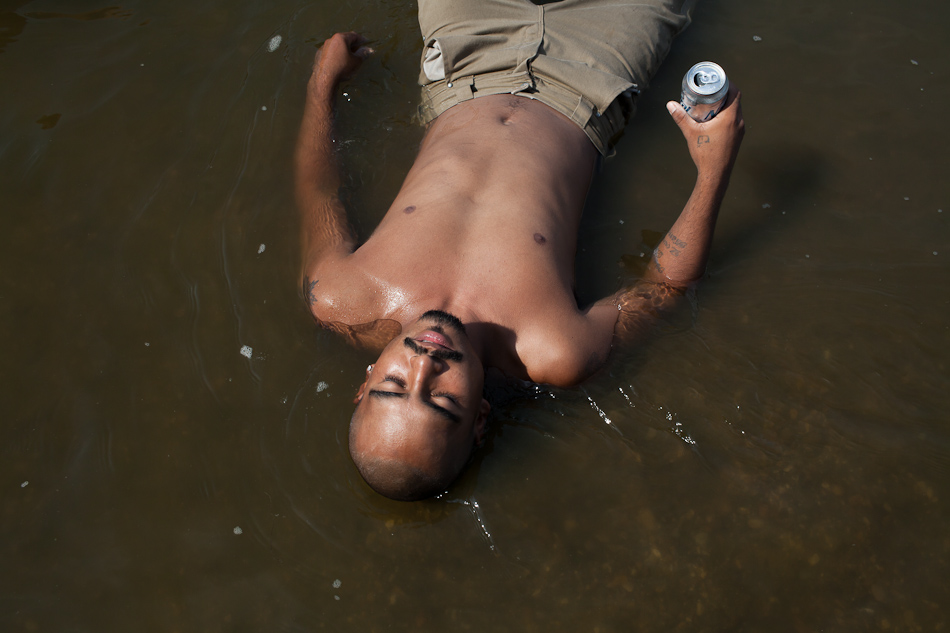
BRENDAN:
It's easy to strike up a conversation with strangers in Webster City. It's the Midwest, and most people are friendly and unassuming. I will often immediately bring up the fact that I'm visiting from Washington, D.C., because it's 1000 miles away, it's kind of exotic, and implies that I went to some considerable effort to be there. Because it's a small town, everyone seems to know everyone else, and odds are at this point I've met enough locals that I can throw out the name of someone they know and establish some bona fides. The local bar has been a pretty good place to network as well. In the end, many of the scenarios reflected in the project have come about because of actual friendships I've made there. An invitation to grill out or go tubing on the river is priceless.
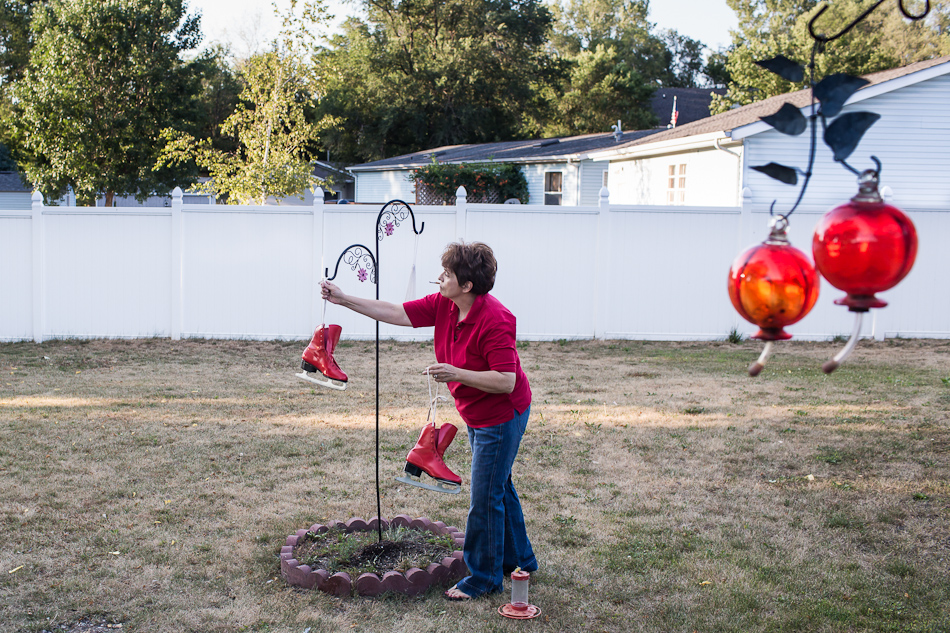
TID:
Was there anything that you learned or put to use in later assignments that come about from this experience?
BRENDAN:
I think it was a great reminder of the fact that you really can't predict when and where you will find a picture. Certainly for the rest of my trip, and in my assignments since, it's been in the back of my mind, pushing me to get off my ass and go see what 's happening, even when what's happening is nothing. Nothing sometimes makes for the most honest and real picture. Every single night after that, I made sure I was out walking and shooting when the light was good and people were less tethered to their air conditioners.
I didn't know if I'd find a good picture when I set out that evening. Looking back, probably less than half the photos in my current edit of the project are from situations or events I attended because I thought they'd produce a good photo. The rest are just a result of constantly trying to engage with people and being mindful of what's happening around me.
TID:
That last statement implies you're doing research in advance to find events and situations. What are you looking for? What concepts or words do you look for as triggers of interest?
BRENDAN:
I do some research for sure. The local newspaper and radio station are good sources of information about events around town. Mainly I'm looking for anything that residents would consider integral to the identity of Webster City or themselves. Traditional events like the annual parade that kicks off the county fair are key, as are the stock car races at the local dirt track. Otherwise, if you give people the chance, they'll tell you what's important to them. It could be hunting season, high school wrestling, or a bowling league, but I can only follow their lead.

:::BIO:::
Brendan Hoffman is a freelance photographer based in Washington, DC. He began his career in 2007 after working several years in the non-profit sector. He divides his time between covering news and politics for clients such as TIME, the New York Times, and Getty Images, and working on his own personal projects. His work has received awards from the White House News Photographers Association and the Dart Center for Journalism & Trauma, among others. Brendan is a co-founder of the photography collective Prime.
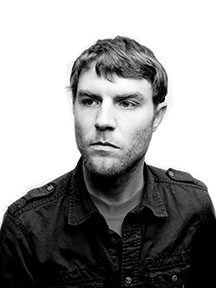
You can view more of his work here: